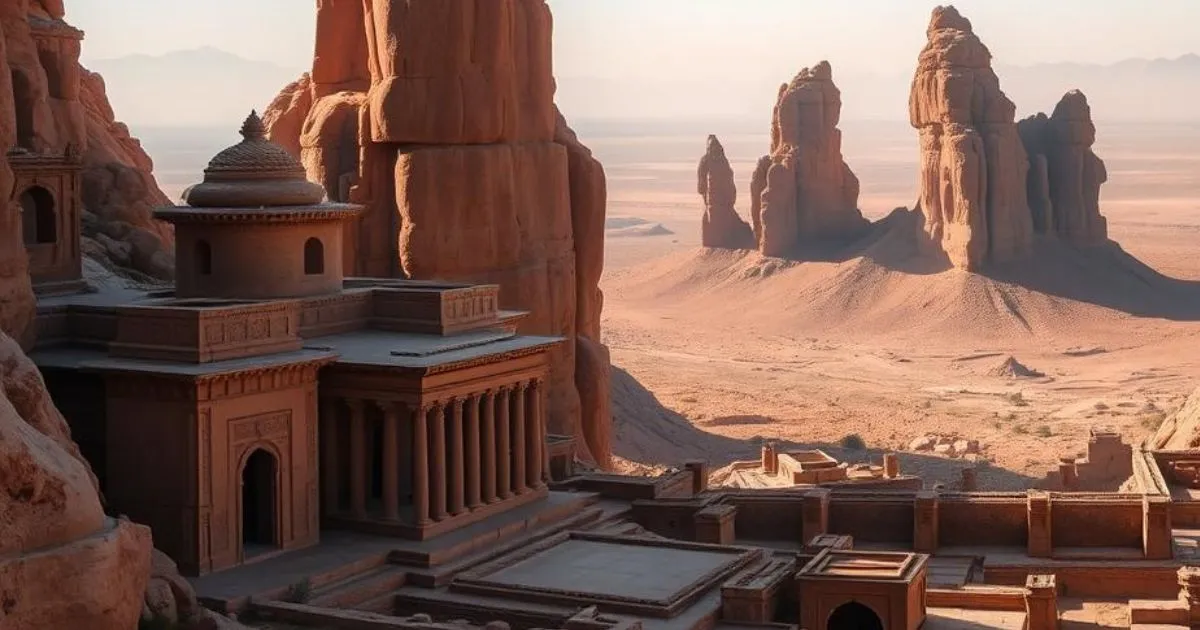Day Trips to Al-Ula: Ancient Wonders and Rock Formations
Table of Contents
Al-Ula: A Guide to Ancient Wonders and Rock Formations
Al-Ula, a region in northwestern Saudi Arabia, is a significant archaeological and geological site. It offers a unique window into ancient civilizations and features striking desert landscapes shaped over millions of years.
Key Highlights of Al-Ula
- Ancient Archaeological Sites: Home to Hegra, Saudi Arabia’s first UNESCO World Heritage Site.
- Unique Geological Formations: Characterized by monumental sandstone structures like Elephant Rock.
- Rich Cultural History: The area contains evidence of the Lihyanite, Dadanite, and Nabatean civilizations.
The Historical and Geological Landscape
Al-Ula’s significance stems from its combination of human history and natural history. The area was a crucial crossroads for ancient trade routes, and its landscape tells a story of geological forces and environmental change.
A Journey Through Civilizations
The Al-Ula valley holds evidence of successive civilizations, including the ancient kingdoms of Dadan and Lihyan, followed by the Nabateans. The presence of water and its strategic location made it a prosperous hub for trade and culture.
Sculpted by Nature: The Geology of Al-Ula
The region’s iconic rock formations are primarily sandstone, shaped by millions of years of wind and water erosion. This process has created a dramatic landscape of towering cliffs, natural arches, and isolated monoliths.
Primary Sites and Attractions
A visit to Al-Ula typically centers on several key destinations that showcase its historical and natural heritage.
Hegra (Mada’in Salih)
Hegra is the Nabatean Kingdom’s southernmost major settlement and a UNESCO World Heritage Site. The site is renowned for its well-preserved monumental tombs, over 100 of which feature intricate facades carved directly into the sandstone outcrops.
The Ancient City of Dadan
As the capital of the Dadan and Lihyan kingdoms, Dadan was one of the most developed cities of the 1st millennium BCE. Visitors can see tombs carved into the cliff face and the remains of this ancient capital.
Jabal Ikmah
Often described as an “open library,” Jabal Ikmah is a canyon filled with hundreds of inscriptions and writings in various ancient scripts. These inscriptions provide valuable insights into the languages, rituals, and daily life of the region’s past inhabitants.
Elephant Rock (Jabal AlFil)
This is one of Al-Ula’s most famous geological formations. Standing at 52 meters high, the natural erosion of the sandstone has resulted in a shape that closely resembles an elephant with a ground-touching trunk.
Al-Ula Old Town
This walled town is a more recent historical site, dating back to around the 12th century. It was inhabited until the 20th century and its dense, mud-brick structures offer a glimpse into a later period of the region’s history.
Planning a Visit
Best Time to Visit
The optimal time to visit Al-Ula is during the cooler months, from October to April, when daytime temperatures are mild and suitable for outdoor exploration.
Cultural Considerations
As a destination in Saudi Arabia, visitors are encouraged to dress modestly and be respectful of local customs and traditions, especially when visiting historical and cultural sites.
Accessibility and Transportation
Al-Ula is served by the Prince Abdul Majeed bin Abdulaziz Domestic Airport (ULH) with flights from major Saudi cities. To explore the extensive area, hiring a private vehicle or joining a guided tour is recommended, as the sites are spread out.
Conclusion
Al-Ula stands as a destination of profound historical importance and breathtaking natural beauty. It offers a comprehensive look into the layers of human history in the Arabian Peninsula, set against a backdrop of one of the world’s most distinctive desert landscapes.

